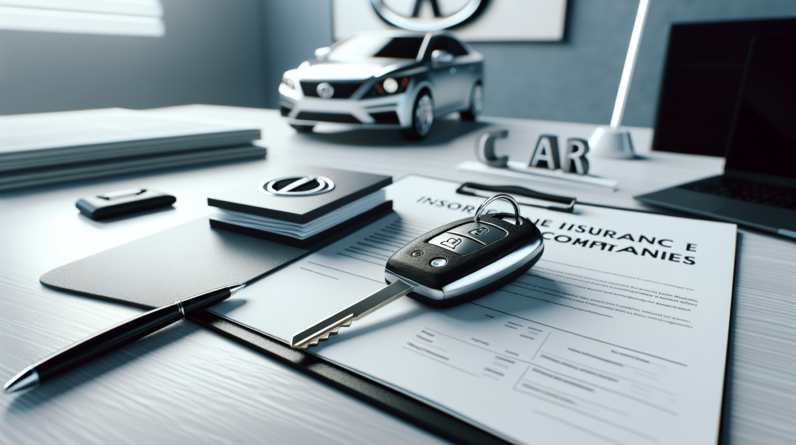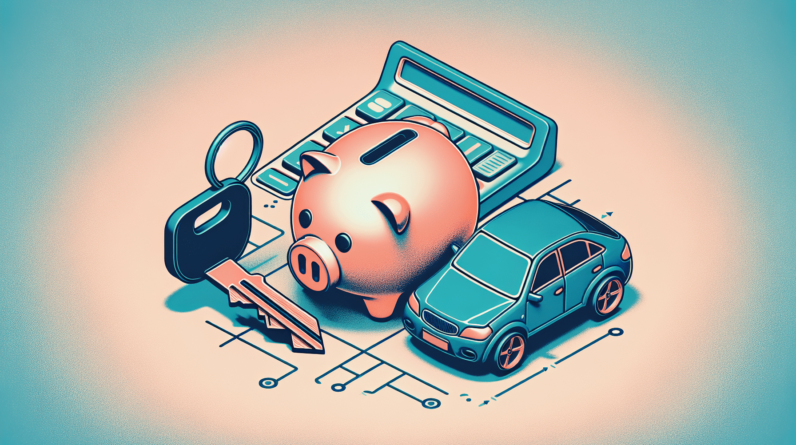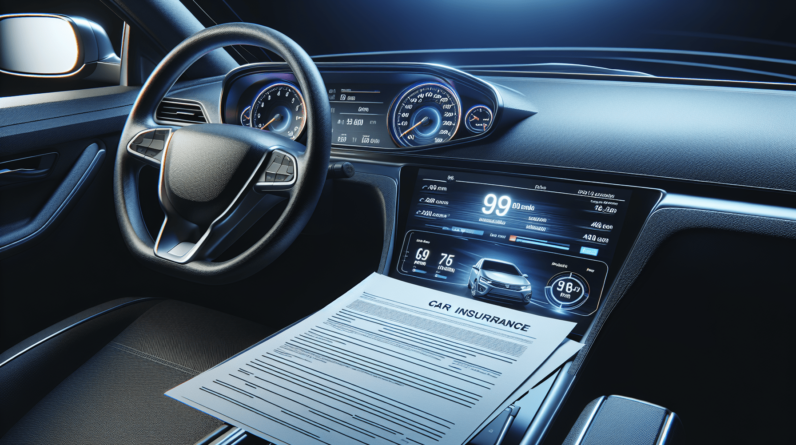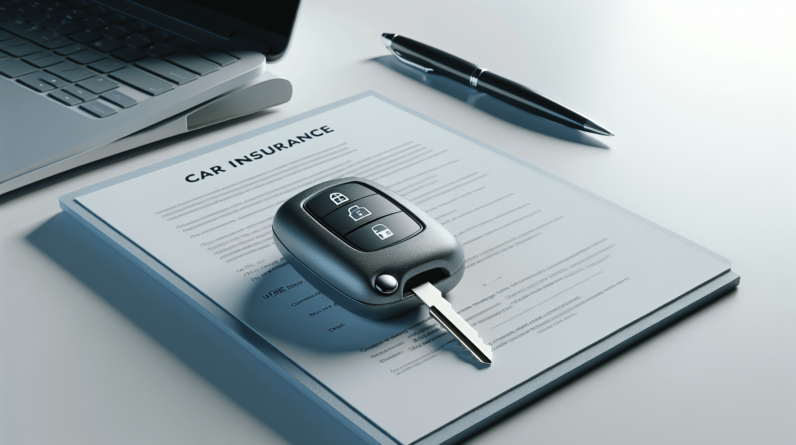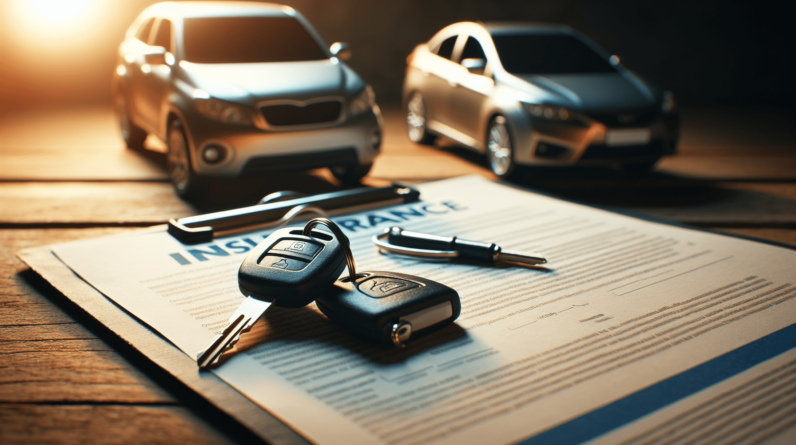
Have you recently earned your driver’s license and are now looking for car insurance? Navigating the world of car insurance can be overwhelming for first-time drivers. With numerous terms, conditions, and policies to understand, it’s essential to know where to start. This article will guide you through the basics of car insurance, what factors affect your premiums, types of coverage, and tips to get the best insurance rates.
Understanding Car Insurance
Car insurance is a contract between you and an insurance company that protects you financially in the event of an accident, theft, or other damages. In exchange for paying a premium, the insurance company promises to cover certain costs associated with vehicle-related incidents.
Why Do You Need Car Insurance?
Car insurance is crucial because it offers financial protection. Accidents can be costly, with expenses ranging from vehicle repairs to medical bills. Additionally, most states require drivers to have a minimum amount of liability insurance to operate a vehicle legally. Without insurance, you could face hefty fines, license suspension, and severe financial strain.
Basic Terms to Know
Before diving into the details, let’s get familiar with some basic car insurance terms:
| Term | Definition |
|---|---|
| Premium | The amount you pay for your car insurance policy, typically monthly or annually. |
| Deductible | The amount you pay out of pocket before the insurance starts covering expenses. |
| Liability Coverage | Covers damages you cause to others in an accident, including their medical expenses and property damage. |
| Comprehensive Coverage | Covers non-collision-related incidents like theft, vandalism, or natural disasters. |
| Collision Coverage | Covers damages to your car resulting from an accident, regardless of who is at fault. |
| Uninsured/Underinsured Motorist Coverage | Protects you if you’re involved in an accident with a driver who has little or no insurance. |
Understanding these terms can help you communicate more effectively with insurance providers and better understand your policy.
Factors Affecting Your Premium
Several factors influence how much you will pay for car insurance. Some of these are within your control, while others are not. Here are the main ones to consider:
Age and Gender
Insurance companies view young drivers as high-risk, and therefore, premiums are typically higher for those under 25. Gender can also play a role, with young male drivers often facing higher rates than their female counterparts.
Driving Experience
First-time drivers, regardless of age, generally pay more for insurance due to their lack of driving history. As you gain experience and maintain a clean driving record, you may see your premiums decrease.
Vehicle Type
The make, model, and year of your car impact your insurance rates. High-performance and luxury vehicles cost more to insure due to their higher repair and replacement costs. On the other hand, cars with advanced safety features may qualify for discounts.
Location
Where you live affects your premium. Urban areas typically have higher rates due to the increased risks of accidents, theft, and vandalism. Rural areas usually have lower premiums.
Credit Score
In many states, insurers use your credit score as a factor when determining premiums. A higher credit score can lead to lower rates, as it’s often seen as an indicator of financial responsibility.
Coverage and Deductibles
The type and amount of coverage you choose will directly affect your premium. Opting for higher coverage limits increases your premium, while choosing a higher deductible can lower it.
Types of Car Insurance Coverage
Understanding the different types of car insurance coverage available is essential for making an informed decision. Here are the most common types:
Liability Coverage
Liability coverage is usually the minimum required by law and consists of two components:
- Bodily Injury Liability: Covers medical expenses, lost wages, and legal fees if you’re at fault in an accident that injures someone.
- Property Damage Liability: Covers the cost of repairing or replacing the other person’s vehicle or property.
Collision Coverage
This coverage pays for damages to your car resulting from a collision with another vehicle or object, regardless of who is at fault. It’s especially important if you have a newer or more expensive vehicle.
Comprehensive Coverage
Comprehensive coverage protects against non-collision-related incidents, such as theft, vandalism, or natural disasters. If your car is stolen or damaged by a falling tree, comprehensive coverage will cover the repair or replacement costs.
Personal Injury Protection (PIP)
PIP, also known as no-fault insurance, covers medical expenses, lost wages, and other costs for you and your passengers, regardless of who is at fault in the accident. PIP is mandatory in some states.
Uninsured/Underinsured Motorist Coverage
This coverage protects you if you’re involved in an accident with a driver who has little or no insurance. It covers medical expenses and repairs when the at-fault driver can’t fully compensate you.
Gap Insurance
Gap insurance is optional and particularly useful if you have a loan or lease on your car. It covers the difference between the car’s current market value and the amount you owe on the loan or lease if your car is totaled.

Tips for Finding Affordable Car Insurance
As a first-time driver, it’s natural to be concerned about the cost of insurance. Here are some strategies to help you find affordable car insurance:
Shop Around
Insurance rates can vary significantly between providers. It’s crucial to get quotes from multiple companies to find the best rate. Use online comparison tools to make this process easier.
Take Advantage of Discounts
Many insurance companies offer discounts that can help lower your premium. Some common discounts include:
- Good Student Discount: If you maintain a high GPA, you may qualify for a discount.
- Defensive Driving Course: Completing an approved defensive driving course can reduce your premium.
- Multi-Car Discount: Insuring multiple vehicles with the same company often qualifies for a discount.
- Bundling Policies: Combining auto insurance with other types of insurance, like homeowners or renters insurance, can lead to savings.
Maintain a Clean Driving Record
Avoiding accidents and traffic violations can help keep your premiums low. Insurance companies reward drivers with clean records by offering lower rates.
Consider a Higher Deductible
Choosing a higher deductible means you’ll pay more out of pocket in case of a claim, but it can significantly lower your premium. Make sure you can afford the deductible you choose.
Limited Mileage Plans
If you don’t plan to drive frequently, consider a limited mileage plan. Some insurers offer lower premiums for cars that are driven less.
Opt for a Safe Vehicle
Choosing a car with advanced safety features and good crash-test ratings can help lower your insurance costs. Insurers often offer discounts for vehicles with features like anti-lock brakes, airbags, and electronic stability control.
The Claims Process
Understanding the claims process is crucial for ensuring a smooth experience if you ever need to file a claim. Here’s a step-by-step guide to help you understand what to expect:
Immediate Steps After an Accident
- Ensure Safety: First, make sure everyone is safe and call 911 if there are any injuries.
- Document the Scene: Take photos of the accident scene, including damages and relevant details like street signs or skid marks.
- Exchange Information: Obtain the other driver’s name, address, insurance information, and vehicle details.
Filing the Claim
- Contact Your Insurance Company: Notify your insurance company as soon as possible to start the claims process.
- Provide Necessary Information: Be prepared to provide details about the accident, including time, location, and a description of what happened.
Working with an Adjuster
Once your claim is filed, an insurance adjuster will investigate the incident. They will assess the damage, determine fault, and estimate repair costs. Stay in contact with your adjuster and provide any required documentation promptly.
Settlement
After the adjuster completes their investigation, the insurance company will offer a settlement based on the policy limits and the findings. Review the offer carefully and negotiate if necessary. Once you accept the settlement, the insurance company will issue payment.
Legal Requirements
Each state has its own legal requirements for car insurance. It’s essential to understand what’s mandated in your state to avoid penalties and ensure adequate coverage.
Minimum Liability Coverage
Most states require drivers to carry a minimum amount of liability coverage. This coverage varies by state but typically includes both bodily injury and property damage liability.
| State | Minimum Liability Coverage (Bodily Injury per person/per accident) | Minimum Property Damage (per accident) |
|---|---|---|
| California | $15,000 / $30,000 | $5,000 |
| Florida | $10,000 / $20,000 | $10,000 |
| New York | $25,000 / $50,000 | $10,000 |
No-Fault States
In no-fault states, each driver’s insurance covers their own medical expenses and lost wages, regardless of who is at fault. PIP coverage is mandatory in these states. Examples of no-fault states include Florida, Michigan, and New York.
Understanding SR-22
An SR-22 is not a type of insurance but a certificate of financial responsibility required for certain high-risk drivers. It’s often necessary after severe traffic violations like DUIs or driving without insurance. Your insurer can file an SR-22 on your behalf, but it generally results in higher premiums.
Common Mistakes to Avoid
Navigating car insurance for the first time can be tricky, and it’s easy to make mistakes. Here are some common pitfalls and how to avoid them:
Not Comparing Quotes
Failing to shop around for quotes can result in overpaying for insurance. Always compare multiple quotes to ensure you’re getting the best rate.
Choosing Insufficient Coverage
Opting for the minimum required coverage may save money upfront but can leave you financially vulnerable in case of a severe accident. Consider your individual needs and risks when choosing coverage levels.
Ignoring Available Discounts
Many people overlook potential discounts. Ask your insurance provider about all available discounts to maximize your savings.
Letting Coverage Lapse
Allowing your insurance coverage to lapse, even for a short period, can lead to higher premiums in the future. Always maintain continuous coverage.
Providing Inaccurate Information
Providing false or inaccurate information when applying for insurance can lead to claim denials and policy cancellations. Always be honest and accurate with your details.
How to Switch Insurance Providers
If you’re not satisfied with your current insurance, switching providers might be a good option. Here’s a step-by-step guide:
Assess Your Current Policy
Before switching, evaluate your existing policy. Understand the reasons for switching and identify what you’re looking for in a new provider.
Get Quotes from Other Providers
Shop around and get quotes from multiple insurance companies. Compare not only the cost but also the coverage options and customer service ratings.
Notify Your Current Insurer
Once you decide to switch, notify your current insurer. Check if there are any cancellation fees and the procedure for ending your policy.
Ensure Continuous Coverage
Make sure your new policy starts before your current one ends to avoid any lapses in coverage.
Importance of Customer Service
Good customer service can make a significant difference in your experience with an insurance company. Here’s why it matters:
Claims Processing
Efficient and supportive customer service can streamline the claims process, making it less stressful and time-consuming.
Problem Resolution
Having access to helpful customer service can expedite the resolution of any issues or disputes that arise during your policy term.
Peace of Mind
Knowing that you can rely on your insurer for support provides peace of mind, especially in stressful situations like accidents.
Future Considerations
As you gain more experience and your circumstances change, it might be necessary to revisit your car insurance coverage. Here are some instances where you might need to update your policy:
Moving to a New Location
Moving can affect your insurance rates. Make sure to update your address with your insurer and check if you need to adjust your coverage based on your new location.
Getting a New Vehicle
When you purchase a new car, you’ll need to update your policy to include the new vehicle. Consider how the new car’s make and model will impact your insurance rates.
Life Changes
Major life events such as marriage, adding a teen driver to your policy, or even improvements in your credit score can affect your insurance needs and premiums.
Final Thoughts
Navigating car insurance for the first time can be complex, but understanding the basics and knowing what factors affect your premiums can make the process more manageable. Remember to shop around, take advantage of discounts, and maintain a clean driving record to secure the best possible rates. By being informed and proactive, you can find the right car insurance policy that meets your needs and keeps you protected on the road.

